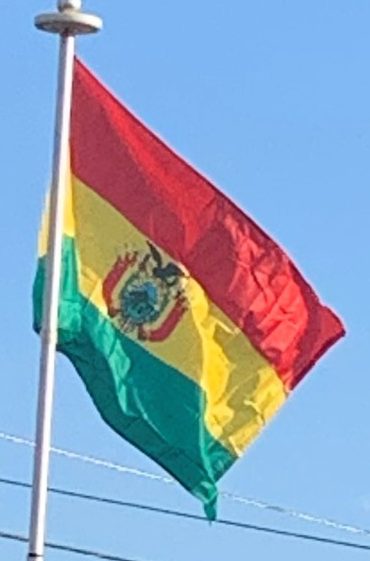Bolivia has the second largest natural gas reserves in South America. The government has a long-term sales agreement to sell natural gas to Brazil through 2019.
The US Geological Service estimates that Bolivia has 5.4 million cubic tonnes of lithium, which represent 50%–70% of world reserves. However, to mine for it would involve disturbing the country’s salt flats (called Salar de Uyuni), an important natural feature which boosts tourism in the region. The government does not want to destroy this unique natural landscape to meet the rising world demand for lithium. On the other hand, sustainable extraction of lithium is attempted by the government. This project is carried out by the public company “Recursos Evaporíticos” subsidiary of COMIBOL.
The income from tourism has become increasingly important. Bolivia’s tourist industry has grown gradually since about 1990.
Transportation:
Air:
Boliviana de Aviación (BoA) is a state-owned company and the country’s largest airline with links to South American, North America and Europe.
Transporte Aéreo Militar – TAM, the Bolivian Military Airline, is an airline based in La Paz, Bolivia. It is the civilian wing of the ‘Fuerza Aérea Boliviana’ (the Bolivian Air Force), operating passenger services to remote towns and communities in the North and Northeast of Bolivia.
A similar airline serving the Beni Department with small planes is Línea Aérea Amaszonas, using smaller planes than TAM.
TAB – Transportes Aéreos Bolivianos, was created in 1977. TAB, a charter heavy cargo airline, links Bolivia with most countries of the Western Hemisphere; its inventory includes a fleet of Hercules C130 aircraft. TAB is headquartered adjacent to El Alto International Airport. TAB flies cargo flights to Miami and Houston, with a stop in Panama.
The three largest, and main international airports in Bolivia are El Alto International Airport in La Paz, Viru Viru International Airport in Santa Cruz, and Jorge Wilstermann International Airport in Cochabamba.
Roadways:
Due to geographic and funding limitations, Bolivia’s road network is not well developed. There are a total of roughly 110 miles of 4 lane expressway in the nation. There are an additional 11 main national roads many of which link to roads in neighboring countries.
Railways:
Bolivia possesses an extensive but aged rail system consisting of two disconnected networks.
Flag of Bolivia:
The national flag of Bolivia was originally adopted in 1851. The state flag and ensign is a horizontal tricolor of red, yellow and green with the Bolivian coat of arms in the center. According to one source, the red stands for Bolivia’s brave soldiers, while the green symbolizes fertility and yellow the nation’s mineral deposits.
Since 2009 the Wiphala also holds the status of dual flag in the country.
